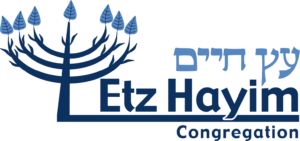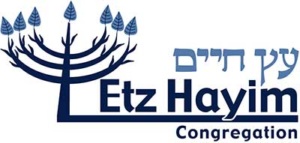My first exposure to the events in this parsha was through the great Jewish scholar, Rabbi Steven Spielberg —specifically the end of Raiders of the Lost Ark, when the lead Nazi dressed in the robes, breast plate, and head covering of the High Priest in order to open the Ark of the Covenant. The scene captured my imagination and sparked an interest in the events as they were described in the Torah. I even drew a picture of the High Priest’s clothing that hung in my childhood shul for years.
But from early on, I had issues with the ceremony described in today’s Torah portion, of the priest passing the people’s sins on to an innocent goat, whose only crime was to be in the wrong place at the wrong time. And as a child I wondered if crime does pay, since the Azazel goat—the goat carrying our sins—gets to run around outside enjoying the wilderness after the ceremony, while his cousin gets sacrificed.
But seriously, the idea of being absolved of sins through ritual sacrifice seems contrary to Judaism to me. I learned as a child, and I see that we continue to teach in our junior congregation and our Hebrew school, that if I sin against God, I ask God’s forgiveness, but if I sin against a person, I must seek forgiveness from that person. Apologizing to God for a sin against man is insufficient. I understand that the passage is symbolic and that ritual does have a cathartic element to it — but it still seems to get us off the hook for our sins with little effort on our part.
In a similar way, I have issues with the idea that our fate is sealed when the Book of Life is closed, and that life and death are predetermined at the start of the year. I remember sitting at High Holiday services in 1997, the year my sister was killed in a sky diving accident, enraged at the thought that her fate with sealed at Yom Kippur in 1996 for some sin she had committed earlier.
And what about today, when we just learned that yet another synagogue, this time in Germany, again runs crimson with Jewish blood? Were the victims in Germany also sealed on the wrong side of the book at Yom Kippur last year?
As with the Azazel goat, I know from listening to the Rabbi and others that the concept of the Book of Life is metaphorical, but I continue to struggle with that part of the services. But as I was preparing this dvar torah, I realized that the haftorah to this parsha and other sources might help me resolve this dilemma.
The rabbis knew what they were doing when they paired the parsha describing in detail the procedure of the Yom Kippur sacrifice with the haftorah from Isiah. Taken together, they show us that we cannot be so easily absolved of our sins—and that the book will not be permanently closed tonight.
In fact, the haftorah tells us that God is offended and does not accept our supplications if we do not take action to address our sins and injustices. Superficially, it points out that fasting and going to services alone is not the fast that God desires on Yom Kippur:
No, this is the fast I desire:
To unlock the fetters of wickedness,
And untie the cords of the yoke
To let the oppressed go free;
To break off every yoke.
It is to share your bread with the hungry,
And to take the wretched poor into your home;
When you see the naked, to clothe him,
And not to ignore your own kin.
Then, when you call, God will answer;
When you cry, He will say: Here I am.
If you banish the yoke from your midst,
The menacing hand, and evil speech,
And you offer your compassion to the hungry
And satisfy the famished creature-
Then shall your light shine in darkness,
And your gloom shall be like noonday.
Note that the word yoke appears three times—and brilliantly invokes the image of the goat wearing the yoke. And that the yoke is paired with the menacing hand, evil speech, and compassion to the hungry, suggesting that it will take actual action against our fellow humans to rid ourselves of the yoke.
And note that the verbs are the present and future tense—share your bread, take the hungry into your home—suggesting that future actions will impact God’s view of the teshuvah, or repentance, being performed. Repentance is tied to tikkun olam – another concept I developed a more nuanced, adult understanding of as I prepared this dvar torah. For years I had believed that tikkun olam meant repairing a broken world, but I learned that it actually refers to the commandment to conduct ourselves properly, observe the mitzvot and the Commandments, and contribute to society and civilization, both by example and through practice and action.
I started this dvar torah with Rev Spielberg of Hollywood, so I will invoke him again. The end of Schindler’s List quotes the Talmud: “Whoever saves a life, it is considered as if he saved an entire world.” This quote becomes a touchstone for me in my work with suicide prevention in the military and with veterans. I may not control my fate or the fate of those I love, but if my actions can help one person, I can save the whole world.
So, there are no goats, no high priest to absolve you or the community of sin. And I don’t believe that there is a literal book being sealed, or gates that are closing tonight that will preordain our lives for the next year. Our absolution will have to be in ourselves. It is upon all of us to be our own High Priest and our own Azazel goat, to redress our sins, both personal and communal, to fix what we broke. While it may be impossible to repair or save the whole world, we can comport ourselves in a way that just might save a few of those individual worlds.I wish you a safe fast but I won’t wish you “G’mar Chatima Tovah,” since it means, “may you be inscribed for good [in the Book of Life].” Instead, I will use the Sephardic greeting “Tizku Leshanim Rabot, Ne’imot veTovot”—may your actions merit many pleasant and good years.
The views and opinions expressed herein are those of the authors and do not necessarily reflect those of the Synagogue or Board of Directors.

